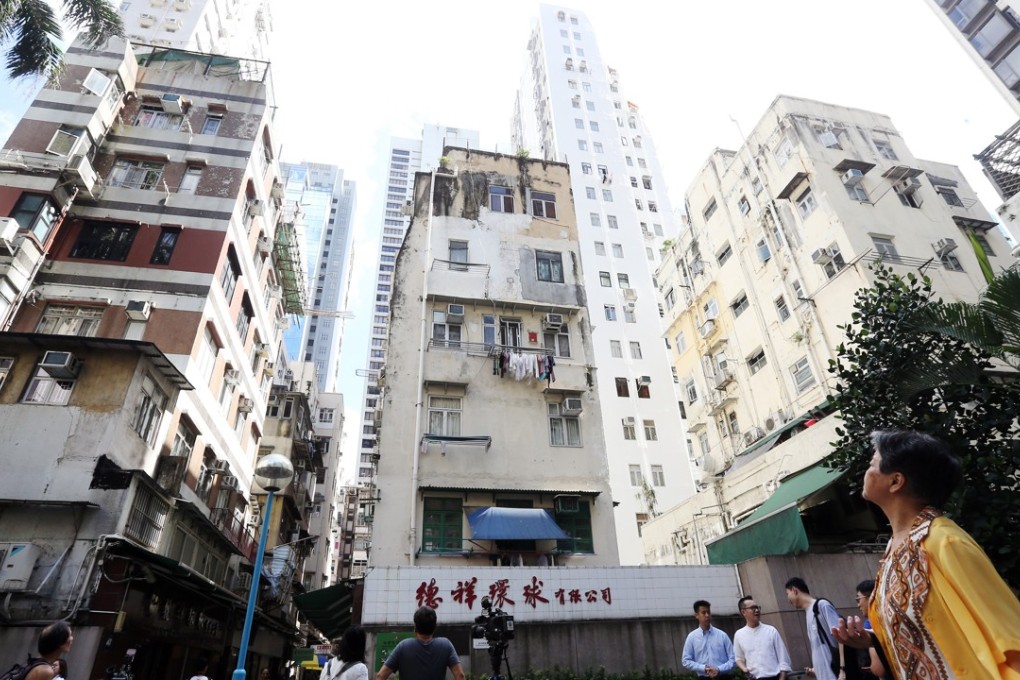Some of Hong Kong’s famous dried seafood vendors face uncertain future under HK$1.3 billion redevelopment plan
Demolition of dilapidated buildings in Sai Ying Pun to open up more public space will affect decades-old businesses

A cluster of dilapidated buildings in Sai Ying Pun is set to be torn down, opening up more public space for the community as part of the Urban Renewal Authority’s latest redevelopment project.
But the HK$1.3 billion plan will displace a number of dried seafood sellers who have done business in the neighbourhood for decades.
On the northwestern tip of Hong Kong Island, the 12,000 sq ft site is home to a group of low-rise buildings built between 1959 and 1978 near Des Voeux Road West – also known as “dried seafood street”.
Next to the site, a small public playground with a single swing, a slide and a few benches is surrounded by residential blocks and accessible only via small lanes.
The URA’s head of planning and design Wilfred Au Chun-ho said: “We have two purposes for this project: first, to improve living conditions; and second ... to enhance connectivity by widening the access to the playground.”